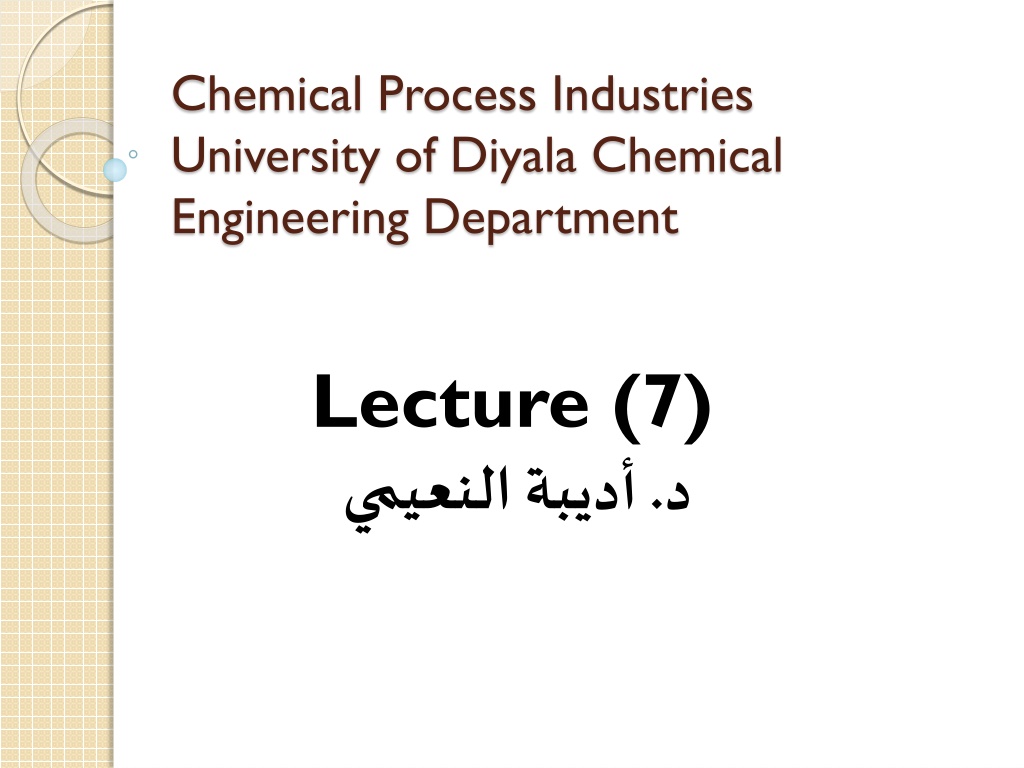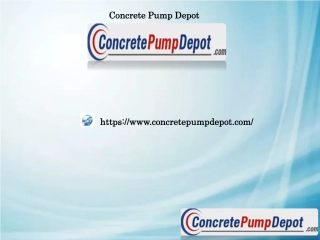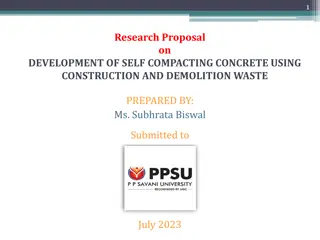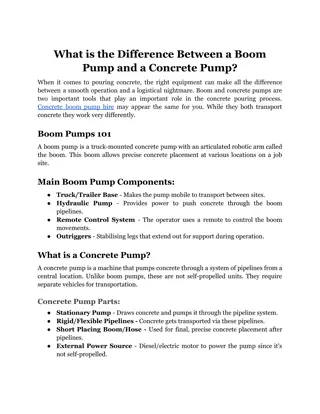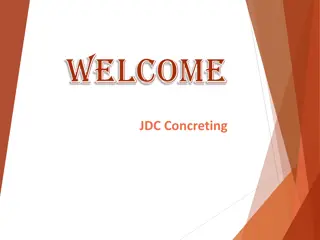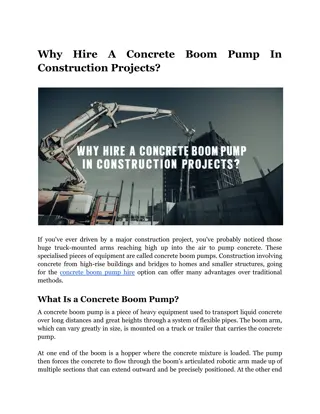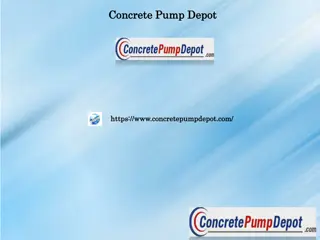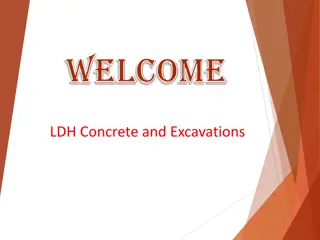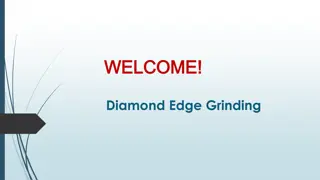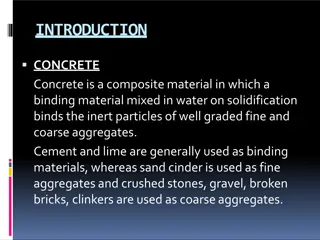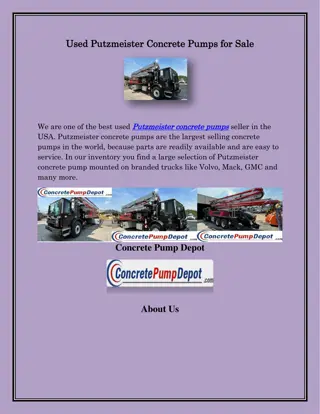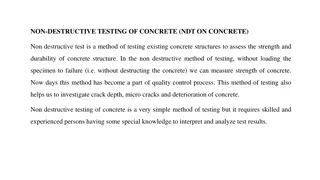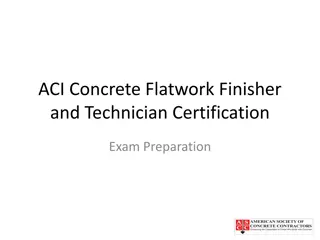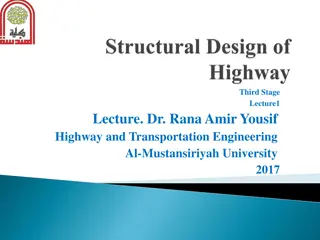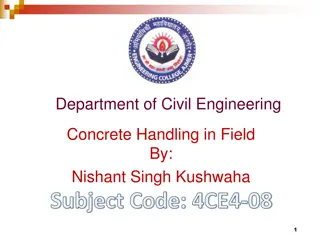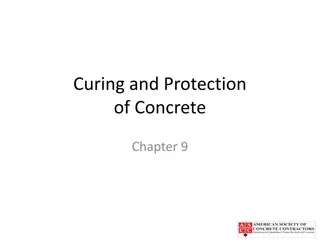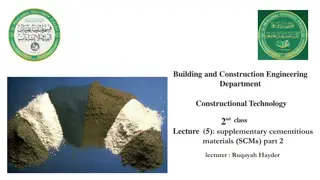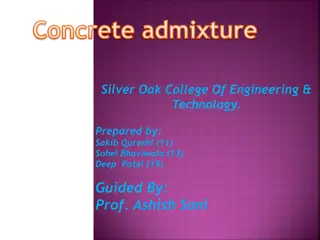Evolution of Concrete in the Chemical Process Industries
Cement and concrete have a rich history dating back thousands of years. Cement was used by ancient civilizations like the Egyptians, Assyrians, Babylonians, and Romans. Concrete, which is a mixture of aggregates bonded by cement and water, revolutionized architecture during the Roman Empire. The introduction of reinforced concrete in the 19th century by Joseph Monier further enhanced the strength and durability of concrete structures.
Download Presentation

Please find below an Image/Link to download the presentation.
The content on the website is provided AS IS for your information and personal use only. It may not be sold, licensed, or shared on other websites without obtaining consent from the author. Download presentation by click this link. If you encounter any issues during the download, it is possible that the publisher has removed the file from their server.
E N D
Presentation Transcript
Chemical Process Industries University of Diyala Chemical Engineering Department Lecture (7) .
Cement Industry Cement is thought to be older than humanity itself, having formed naturally 12 million years ago, when burnt limestone reacted with oil shale. Concrete dates back to at least 6500 BCE when the Nabatea of what we know now as Syria and Jordan used a precursor of modern-day concrete to build structures that survive to this day. TheAssyrians and Babylonians used clay as the bonding substance or cement. The Egyptians used lime and gypsum cement..
he Nabateau are thought to have invented an early form of hydraulic concrete which hardens when exposed to water using lime. The adoption of concrete as a building material transformed architecture throughout the Roman Empire, making possible structures and designs that could not have been built using just the stone that had been a staple of early Roman architecture. Suddenly, arches and aesthetically ambitious architecture became much easier to build. The Romans used concrete to build still- standing landmarks such as the Baths, the Colosseum, and the Pantheon.
Concrete is a material used in building construction, consisting of a hard, chemically inert particulate substance known as an aggregate (usually made from different types of sand and gravel), that is bonded together by cement and water. Aggregates can include sand, crushed stone, gravel, slag, ashes, burned shale, and burned clay. Fine aggregate (fine refers to the size of the aggregate particulates) is used in making concrete slabs and smooth surfaces. Coarse aggregate is used for massive structures or sections of cement.
Concrete took a historic step forward with the inclusion of embedded metal (usually steel) to form what s now called reinforced concrete or ferroconcrete. Reinforced concrete was invented in 1849 by Joseph Monier, who received a patent in 1867. Monier was a Parisian gardener who made garden pots and tubs of concrete reinforced with an iron mesh. Reinforced concrete combines the tensile or bendable strength of metal and the compressional strength of concrete to withstand heavy loads. Monier exhibited his invention at the Paris Exposition of 1867. Besides his pots and tubs, Monier promoted reinforced concrete for use in railway ties, pipes, floors, and arches. Its uses also ended up including the first concrete-reinforced bridge and massive structures such as the Hoover and Grand Coulee dams. .
Dry, semi-dry, semi-wet and wet processes are the four main process routes that are used for the production of cement. Dry processes are considerably more energy efficient but the choice of technology mainly depends on the state of raw materials. Thanks to the availability of dry materials a great share of production in the developed world is today converted to dry processes. Dry processes are also the choice for new plants or for those looking for expansions or upgrades. The energy-intensive wet process is still used in some countries (and is a considerable share of production in the Former Soviet Union, Australia, and New Zealand), but is being phased out in many countries.
Most of the energy use and CO2emissions of the cement industry is linked to the production of clinker, which is the main component of cement and produced by sintering limestone and clay. Electricity needed for crushing and grinding raw materials, fuel, and the finished products represents another important energy demand. Proven technical options with potential to enable considerable reductions in energy use and CO2emissions can be categorized into: use of energy efficient technologies; use of alternative raw materials and fuels, and reducing the clinker content of cement via increased use of other blends. There are also emerging options in the form of alternative cementitious materials and carbon capture and storage. CementSchematic
Finish Grinding In the finish grinding, clinker is mixed with gypsum and other minerals, such as blast furnace slag,according to the specifications of desired end products and are ground, or milled, to achieve required particle fineness. Finish grinding accounts for nearly 40% of the electricity use in cement production.(ECRA, 2009)
Ball mills continue to be the dominating choice for finish grinding, although their share has decreased from 59% in 2000 to 49% in 2007. On the other hand, vertical roller mills (VRM) are increasingly used for finish grinding (having a share or 39% in 2007). Combined share ofroller presses and horizontal rollers for finish grinding is 12% (ZKG, 2010(link is external)). A significant reduction of the specific energy demand for cement grinding can be achieved either by combining VRMs or high pressure grinding rolls (HPGR) with existing ball mills or by a complete replacement of ball mills by these technologies. Saving potentials are, however, limited by the quality requirements of the final product and the specific system layout as well as auxiliary equipment installed. Whereas required grain sizes up to 4500 to 5500 Blaine can be achieved in VRM and HPGR, the resulting particle size distribution of the cement and thus cement performance can vary in the different systems raising the need for product quality control plans. (ECRA, 2009)
In contrast, combined grinding layouts, being the most common systems installed, set the standard for product quality and do not have to face quality problems. These multi-stage configurations are, however, more complex to operate. Their saving potentials approach to 30% with an additional 80% increase in throughput as compared to single-stage grinding in ball mills. Despite such savings, it has to be taken into account that the application of VRM and HPGR is connected to higher capital costs and requires additional maintenance efforts.(ECRA, 2009).
